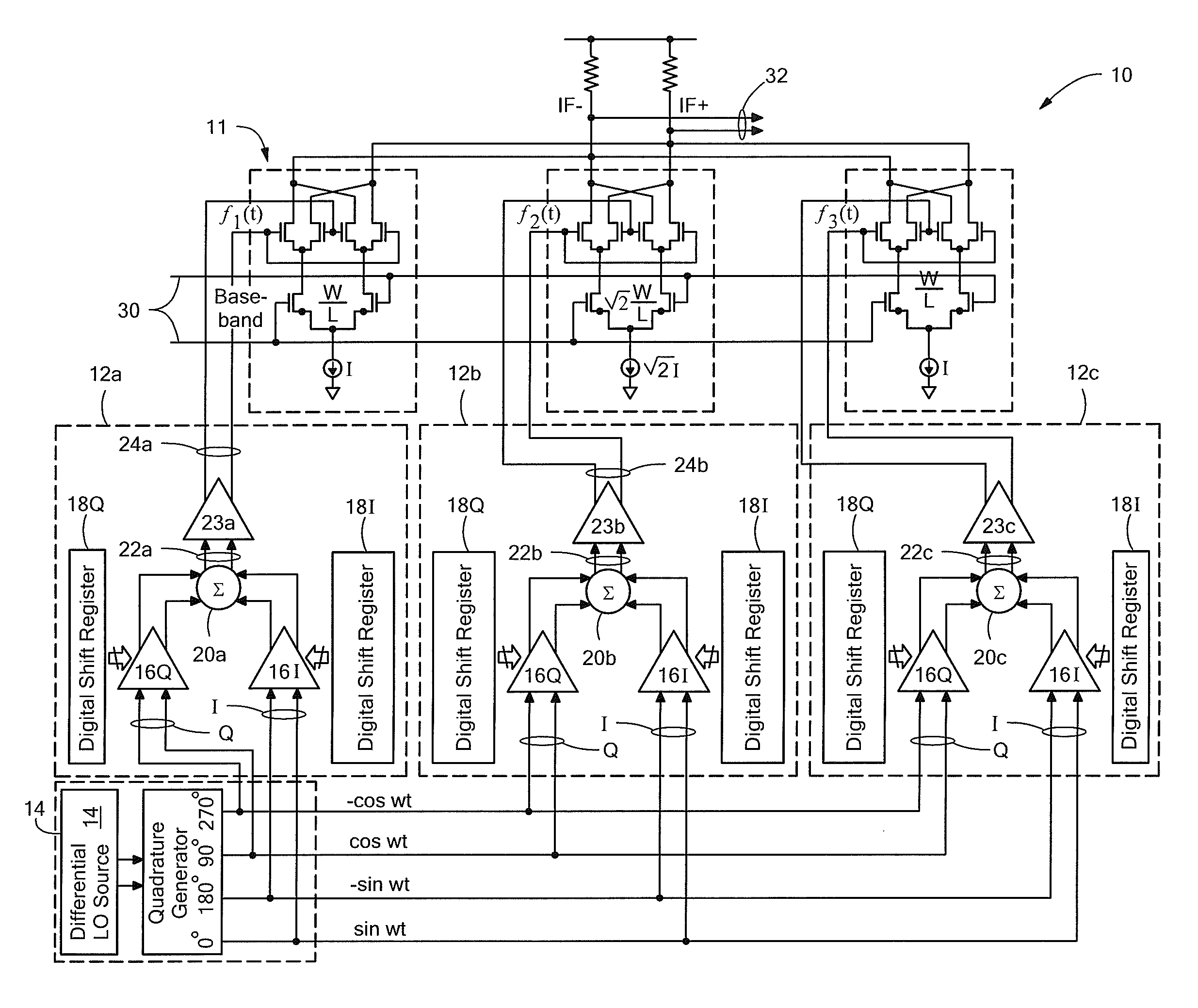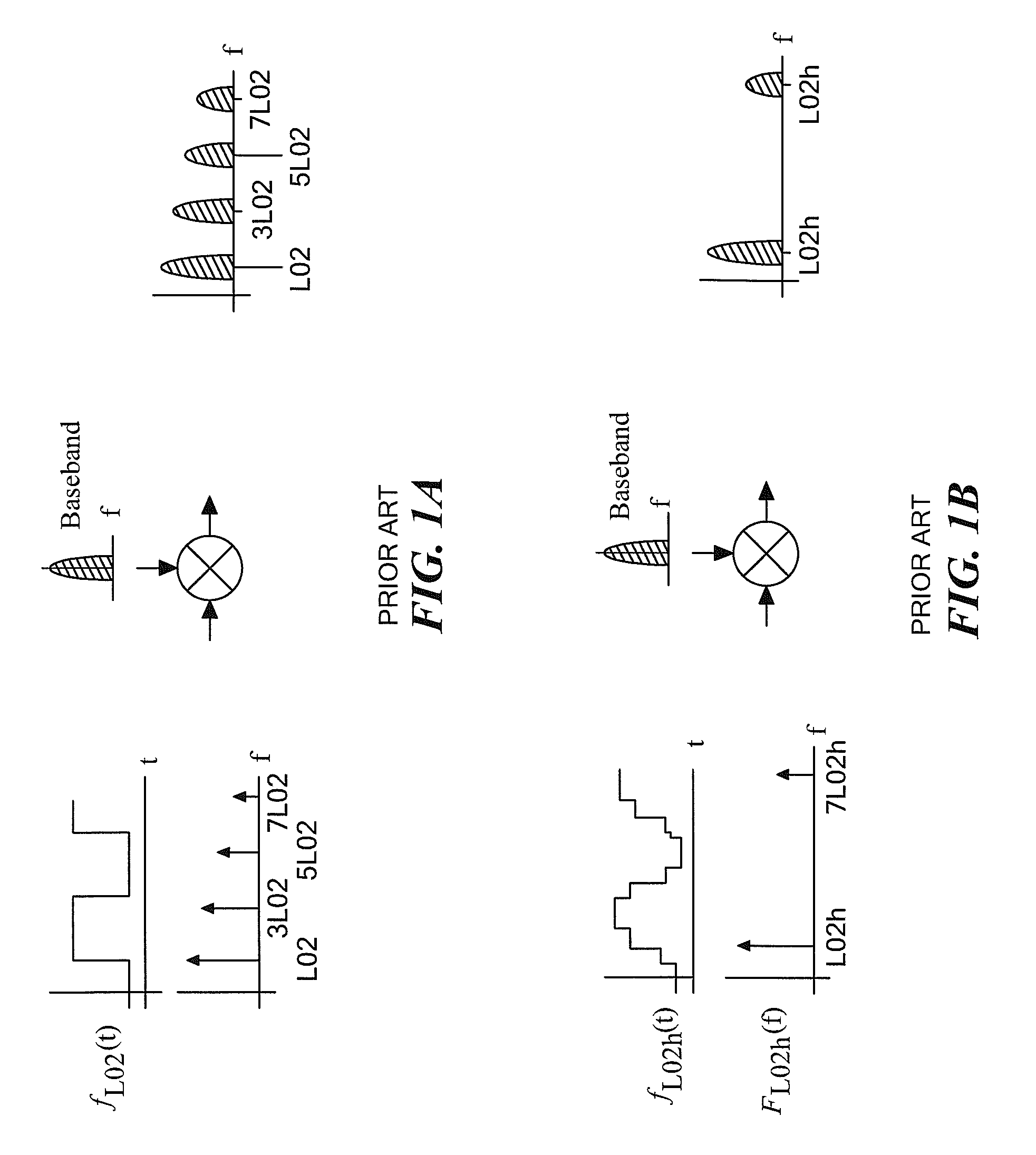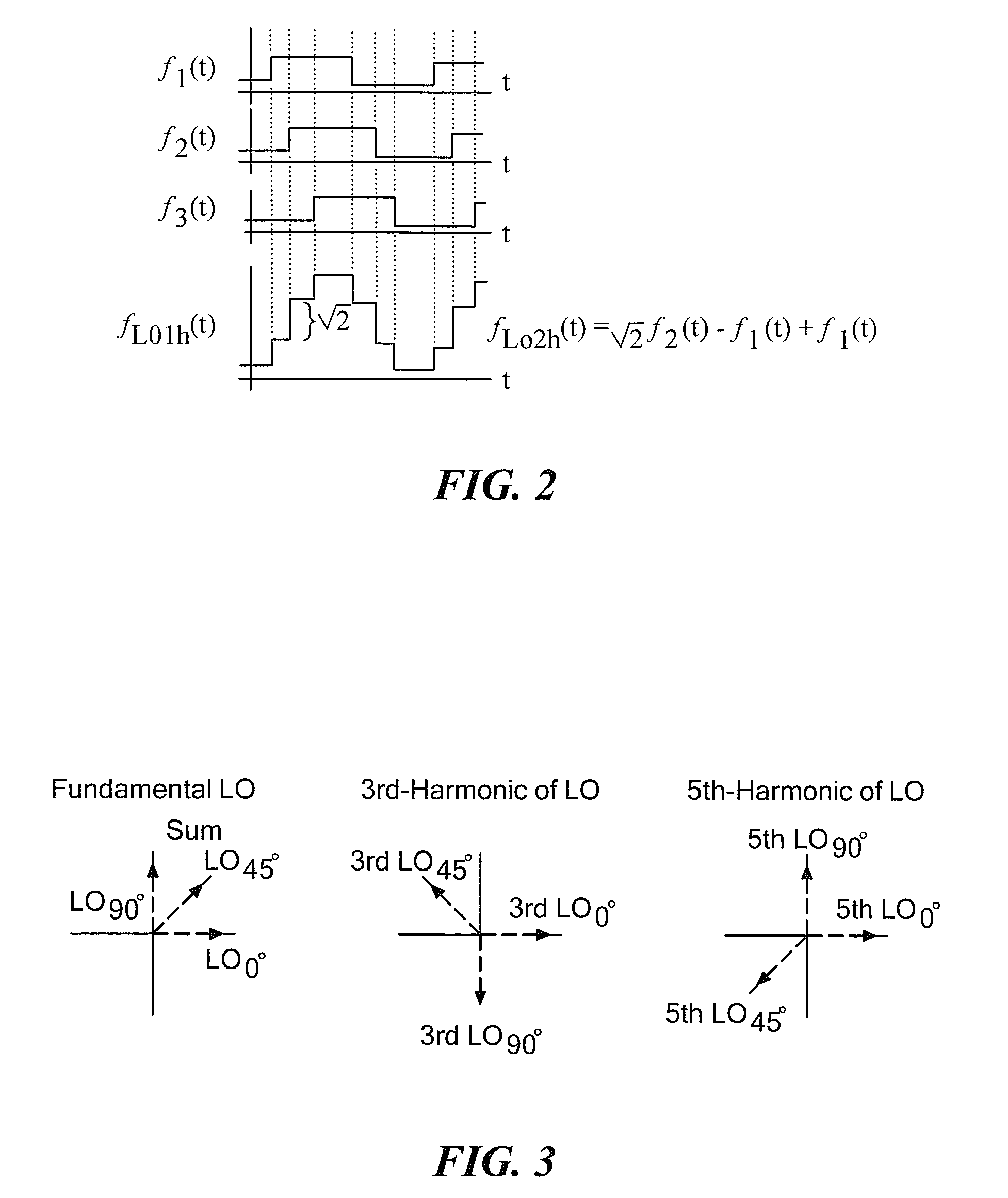Harmonic reject mixer with active phase mismatch compensation in the local oscillator path
- Summary
- Abstract
- Description
- Claims
- Application Information
AI Technical Summary
Benefits of technology
Problems solved by technology
Method used
Image
Examples
Embodiment Construction
[0033]Referring now to FIGS. 8A and 8B, a harmonic reject mixer 10 with phase rotators in the LO path is shown having: a plurality of, here three, phase rotators 12a-12c fed by a common input local oscillator (LO) 14 signal (here a quadrature signal produced by passing a differential signal from a LO source through a quadrature generator) having a reference frequency. Thus, four signals are produced by the LO 14 each being the same frequency and shifted in phase one from the other by ninety degrees; i.e., .a zero degree phase shift signal (0); a ninety degree phase shift signal (90); a one hundred eighty degree phase shifted signal (180) and a two hundred seventy degree phase shifted signal (270), as indicated The a zero degree phase shift signal (0) and the ninety degree phase shift signal (90) are in the in-phase channel (I) and are fed to a variable gain digital amplifier 161 while the a one hundred eighty degree phase shifted signal (180) and a two hundred seventy degree phase s...
PUM
 Login to View More
Login to View More Abstract
Description
Claims
Application Information
 Login to View More
Login to View More - R&D
- Intellectual Property
- Life Sciences
- Materials
- Tech Scout
- Unparalleled Data Quality
- Higher Quality Content
- 60% Fewer Hallucinations
Browse by: Latest US Patents, China's latest patents, Technical Efficacy Thesaurus, Application Domain, Technology Topic, Popular Technical Reports.
© 2025 PatSnap. All rights reserved.Legal|Privacy policy|Modern Slavery Act Transparency Statement|Sitemap|About US| Contact US: help@patsnap.com



